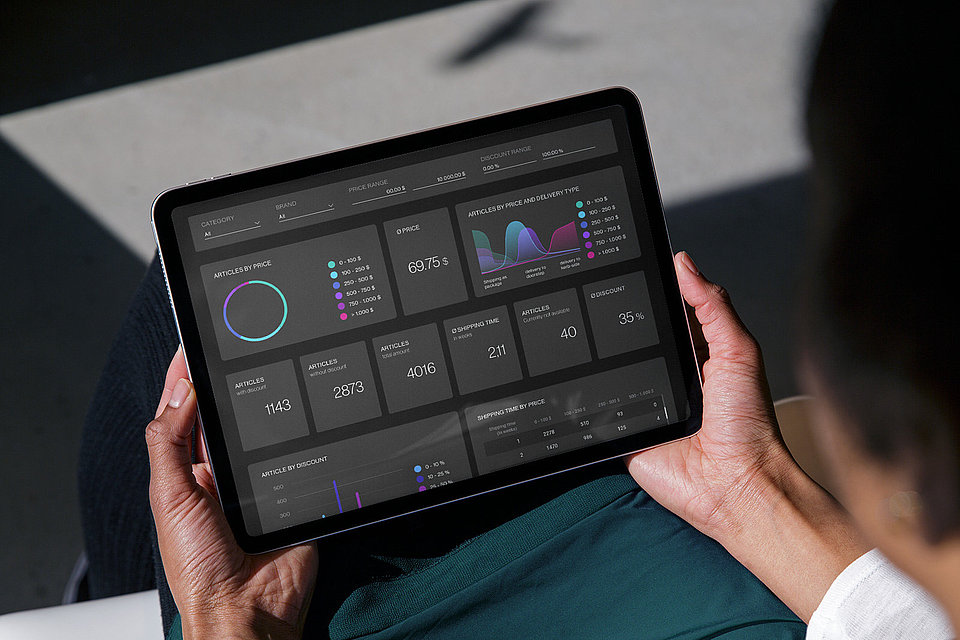6 Questions on Price Optimization – Your Guide to Successful Pricing in E-Commerce
In hardly any area of the retail industry does price play such a large role as in e-commerce. That's why price optimization is crucial for competitiveness.

Price optimization is crucial for you as an online retailer. In hardly any area of the retail industry does price play such a large role as in e-commerce.
You experience it every day: online retail is extremely competitive. But how do you best approach the topic of price optimization? With competitive pricing, customer-oriented pricing or dynamic price optimization? We will cut a path through the thicket of terms and approaches for you. Because a good pricing strategy is always customized.
Definition: What does price optimization mean?
An intelligent pricing strategy optimizes prices in response to market conditions, customer expectations, and competitors. If your own prices are too high, customers will move on. If they are too low, you leave margin potential untapped. And you may give customers the impression of poor quality and a lack of service.
So your task is to optimize prices. Preferably on a continuous basis and in near real time. Intelligent automation allows you to set truly dynamic prices. This means that each of your products always has the price that is ideal given your individual strategy.
What are the advantages of dynamic price optimization in e-commerce?
Dynamic price optimization, also called dynamic pricing, continuously optimizes your e-commerce prices based on defined rules. Your pricing software – such as MARGIN MAXIMIZER – regularly performs competitive analyses, takes on the scraping of all product data from competitor sites and also includes any other factors. These can be your own costs and margins, your inventory levels, or even competitors’ delivery times. You yourself define the rules that your price optimization software should apply to the automated price adjustments (or price proposals).
Often, market- or competition-oriented pricing (competitive pricing) is a component of price optimization. For example, you always want to maintain price leadership among your top 3 competitors for certain products? No problem: with good dynamic pricing, you will always stay ahead.
In which industries is dynamic price optimization of high relevance?
Price transparency is never as high as it is in e-commerce. Customers can easily compare prices, and competition is equally intense. This means that dynamic price optimization is practically mandatory for online retailers.
Industries in which product ranges change very quickly cannot do without dynamic pricing anyway. The fashion industry, for example – the keyword here is fast fashion. This is basically true for the entire retail sector. But even in the B2B sector, markets are changing much faster than you might think. Here, too, dynamic pricing has long been used to optimize list prices, discount scales or promotions and campaigns.
How do you proceed when implementing price optimization?
For online retailers, price optimization begins with the realization that manually scraping data from competitor sites is not feasible. But choosing the right price optimization software also requires thought. Does it cover all the functionality I need for my dynamic pricing? Does it fit my strategy?
The rules for price monitoring also need to be thought through. For example, it’s worth setting the frequency for scraping competitive data at the product level: The software might then crawl your bestsellers several times a day, but the long-tail only monthly.
And dynamic pricing means being fast. If you want to use the intelligent algorithms of your software for automated price optimization, then let the results of price monitoring feed in almost in real time. Based on the market monitoring, you can also regularly check whether your marketing and pricing strategy still fits. Are there perhaps new relevant competitors or new market segments? Your strategy should be as dynamic as your market!
Related to this in our blog: “7 most common mistakes in price monitoring and how to avoid them“.
Example – How is price optimization used on Amazon?
Price optimization on Amazon is almost self-evident. Merchants fight for the buy box with repricing. But it’s not always the lowest price that leads a merchant directly to the buy box on Amazon’s product detail page. Amazon takes a number of other metrics into account, such as delivery times, shipping methods, and seller ratings. Good, intelligent price optimization software also takes all these criteria into account.
Automated, dynamic pricing for Amazon (or for other marketplaces) does not result in ruinous undercutting competition for you as a merchant, but in a sensibly optimized price with the highest possible margin. By the way, Amazon itself also benefits from higher prices – through more commission revenue.
Price optimization software MARGIN MAXIMIZER – What are practical experiences and results?
Dynamic price optimization with MARGIN MAXIMIZER works. Often within a very short time.

Get to know the unique possibilities of price optimization with priceintelligence! In a completely individual, personal online demo of 30 to 45 minutes in length. Click here for your free registration.